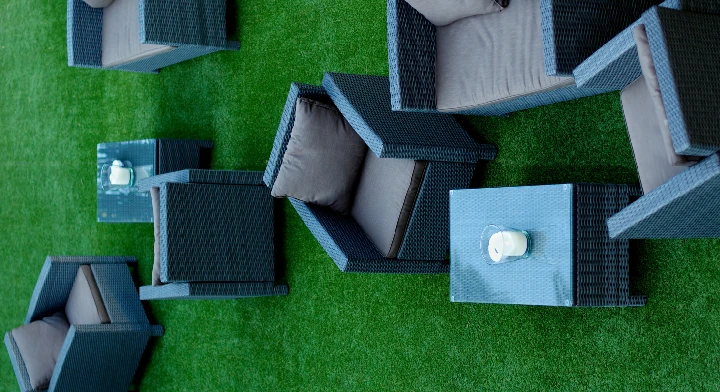
- Afrikaans
- Arabic
- Belarusian
- Bengali
- Czech
- Danish
- Dutch
- English
- Esperanto
- Estonian
- Finnish
- French
- German
- Greek
- Hindi
- Hungarian
- Icelandic
- Indonesian
- irish
- Italian
- Japanese
- kazakh
- Rwandese
- Korean
- Kyrgyz
- Lao
- Latin
- Latvian
- Malay
- Mongolian
- Myanmar
- Norwegian
- Persian
- Polish
- Portuguese
- Romanian
- Russian
- Serbian
- Spanish
- Swedish
- Tagalog
- Tajik
- Thai
- Turkish
- Turkmen
- Ukrainian
- Urdu
- Uighur
- Uzbek
- Vietnamese
Benefits of Using Synthetic Grass for Soccer Fields and Training Facilities
Dec . 25, 2024 10:34 Back to list
The Rise of Synthetic Grass in Soccer A Game Changer
In recent years, the evolution of sports surfaces has seen a remarkable transformation, with synthetic grass emerging as a leading choice for soccer fields around the globe. Traditionally, natural grass has been the surface of choice for many soccer enthusiasts, but synthetic materials are gaining traction due to their durability, cost-effectiveness, and environmental benefits. This article explores the various advantages of synthetic grass in soccer, its impact on the game, and the future prospects of its integration across various levels of play.
Durability and Maintenance
One of the most significant advantages of synthetic grass is its durability. Unlike natural grass, which can become worn out or damaged due to heavy foot traffic, harsh weather, or inadequate maintenance, synthetic surfaces can withstand a high level of activity without deteriorating. This durability allows soccer fields to host numerous games and practices without the need for extensive repairs. Moreover, synthetic grass requires less maintenance than natural grass, which often demands regular mowing, watering, fertilizing, and pest control. For organizations and municipalities with limited budgets or resources, synthetic grass presents a practical and sustainable solution.
Cost-Effectiveness
While the initial installation cost of synthetic grass may be higher than that of natural grass, the long-term financial benefits are significant. Natural grass fields incur ongoing expenses, including maintenance, water, and labor costs. In contrast, synthetic fields reduce these recurring costs, making them more economically feasible over time. Additionally, synthetic grass can be used in various weather conditions, allowing for year-round play. This eliminates the seasonal downtime often experienced with natural turf, further maximizing the potential revenue for sporting organizations and communities.
Player Performance and Safety
The safety of players is of utmost concern in any sport, and synthetic grass has been designed with this consideration in mind. Modern synthetic fields use advanced materials and technologies to provide shock absorption, reducing the risk of injury during play. These surfaces can also be engineered to mimic the feel of natural grass, offering players a familiar experience while enhancing their performance. Furthermore, synthetic grass maintains its integrity even in wet conditions, reducing the likelihood of muddy, slippery fields that can lead to slips and falls.
soccer synthetic grass

Environmental Considerations
With increasing awareness of environmental issues, synthetic grass offers several eco-friendly benefits. For one, it requires significantly less water than natural grass, a crucial factor in areas facing water scarcity or drought conditions. This water conservation can be particularly advantageous for regions that prioritize sustainability. Additionally, advancements in synthetic grass technology have led to the development of recyclable materials, allowing for a more sustainable lifecycle. Some organizations are even experimenting with infill options made from organic or sustainable materials, further reducing the carbon footprint associated with soccer fields.
A Global Trend
The adoption of synthetic grass in soccer is not limited to professional leagues. Many schools, local clubs, and community organizations are investing in synthetic fields to provide better playing conditions for young athletes. Countries around the world are re-evaluating their sporting infrastructure, realizing the many benefits synthetic surfaces offer. From urban areas where space is at a premium to rural regions looking to improve facilities, the versatility of synthetic grass makes it an ideal choice.
The Future of Soccer Fields
As technology continues to advance, the quality and performance of synthetic grass will only improve. Ongoing research focuses on creating surfaces that better mimic the characteristics of natural grass while enhancing safety and performance. Furthermore, as the demand for sustainable practices grows, the soccer community will likely see an increased emphasis on environmentally friendly materials used in synthetic surface production.
In conclusion, synthetic grass has emerged as a transformative element in the world of soccer, offering numerous benefits that enhance gameplay, reduce maintenance costs, and promote environmental sustainability. With its growing acceptance at all levels of the sport, from grassroots initiatives to professional leagues, synthetic grass is not just a trend but a viable solution for the future of soccer fields around the world. As more organizations recognize its advantages, we can expect to see a continued rise in the use of synthetic grass, ultimately enriching the soccer experience for players and fans alike.
-
The Benefits of Artificial Turf for Indoors
NewsJul.15,2025
-
How Artificial Grass Suppliers Ensure Quality Products
NewsJul.15,2025
-
Artificial Grass and Pets: A Space for Relaxation
NewsJul.08,2025
-
Balcony & Outdoor Decoration with Artificial Grass
NewsJul.08,2025
-
Best Indoor Artificial Grass for Home
NewsJul.07,2025
-
Best Pet Turf for Dogs: Safe & Durable Artificial Grass Options
NewsJul.07,2025
Products categories









